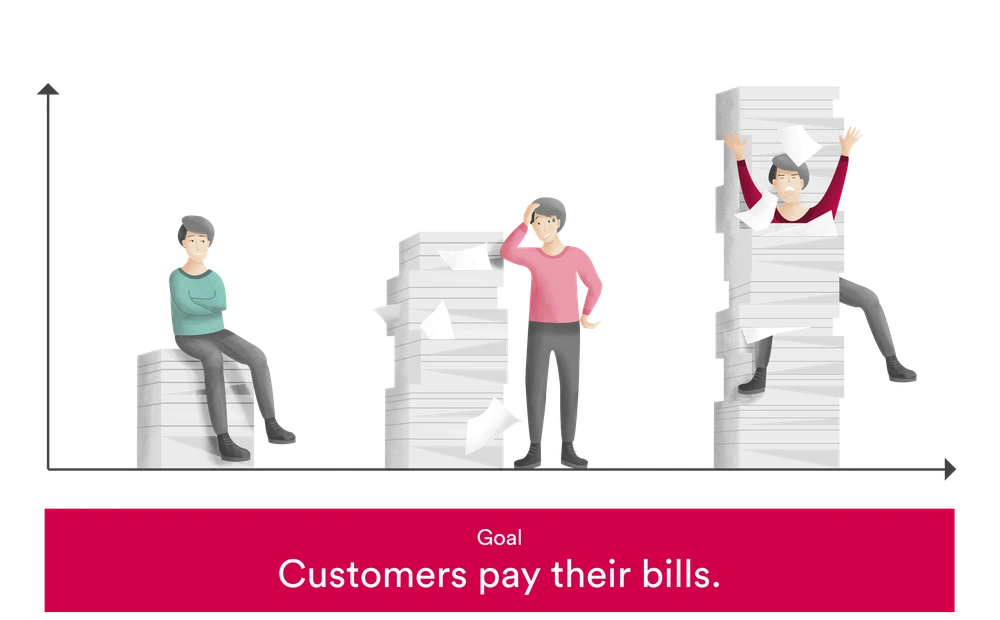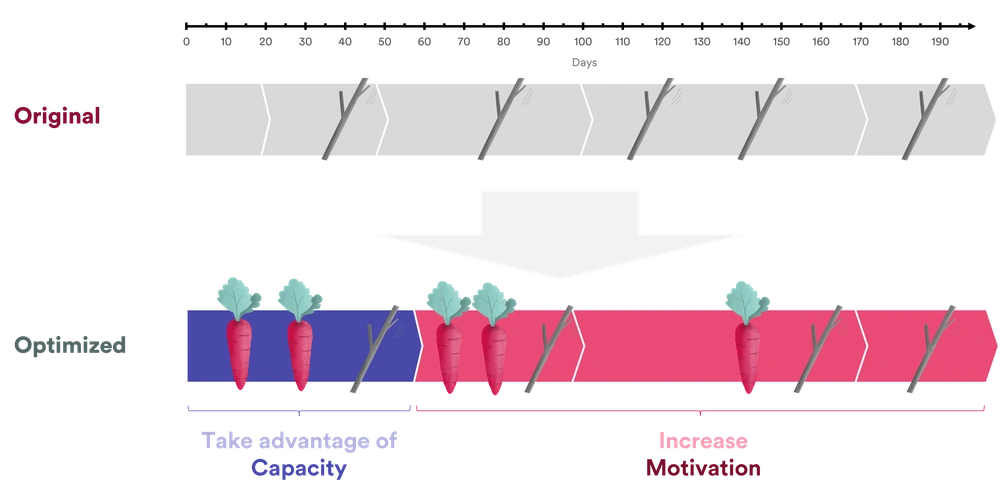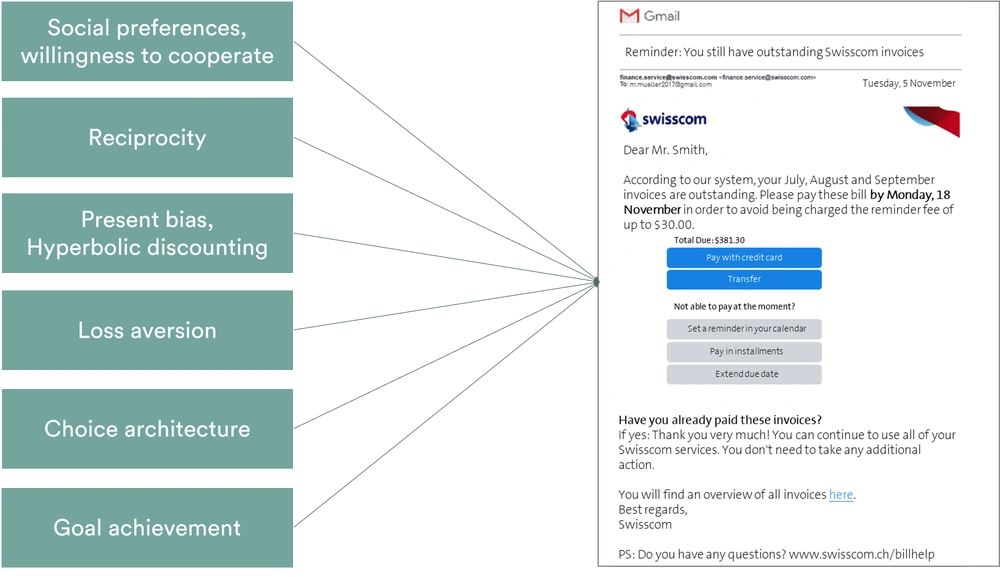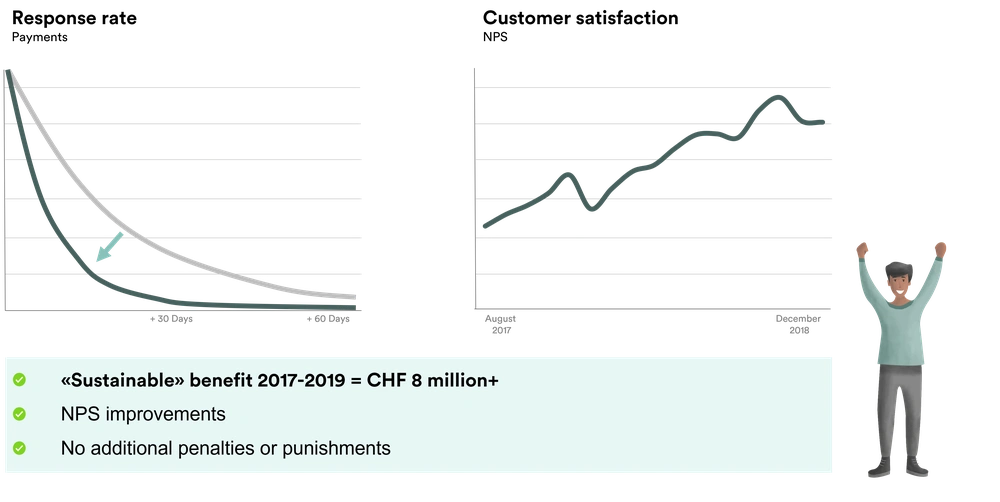8 million Swiss francs saved in 2 years, around 70% fewer contract cancellations due to unpaid bills and significantly more satisfied customers - we illustrate how we used systematic approaches from behavioral economics and user-centered design to redesign Swisscom's dunning process.
Today's payment processes do not seem to be aligned with user needs. More and more people are failing to meet their payment deadlines. Swisscom has identified potential for optimization whithin their dunning processes and asked die Ergonomen for help. A new dunning strategy was needed to motivate customers to pay their bills on time and at the same time keep satisfaction high.

Fig. 1: A problem of many of today's billing processes: The increasing number of unpaid invoices.
Before we started to optimize Swisscom's dunning strategy and the associated processes and touchpoints, it was very important to understand the "why": Why don't customers pay their bills? If you work with assumptions on such profound topics, you run the risk of quickly going in the wrong direction in finding a solution.
Accordingly, we did not lock ourselves in a workshop room and discussed possible requirements internally, but conducted emotional interviews with end customers and in-depth surveys with call center agents. This enabled us to really understand the needs and "pain points" in the dunning system. We combined the results from the user research with insights from behavioral economics to create a behavioral model. This served as the basis for the design process and the customer communication.

Fig. 2: Motivating with sanctions (sticks) or with incentives (carrots)? It's the mix that makes the difference.
In the design phase, for example, we revised letters, payment options, and reward and punishment times in the reminder process. At each step, we addressed the questions: How can Swisscom effectively motivate payment? With sanctions (stick) or incentives (carrots) or both? How do we not only motivate the customers, but also take into account their possibilities and the right time?
We started, for example, with perceived simplicity, perceived autonomy, social status, and fear of losing something. The result of the design phase consisted of a new dunning process, visualized by several high-fidelity prototypes. To test the impact of these, we conducted usability tests and optimized the dunning process based on the findings.

Fig. 3: Behavioral economics principles applied to the prototype of a reminder email.
After helping Swisscom relaunch its dunning process, Swisscom saved more than 8 million Swiss francs within 2 years. Customers in delay of payment are now much more satisfied with Swisscom's approach and pay their bills more punctually. In addition, the number of contract terminations due to unpaid bills has fallen by around 70%.
See also the blog post "A new start for the dunning process at Swisscom" (Elisabeth Immer).

Fig. 4: Result: Higher customer satisfaction and additional savings.